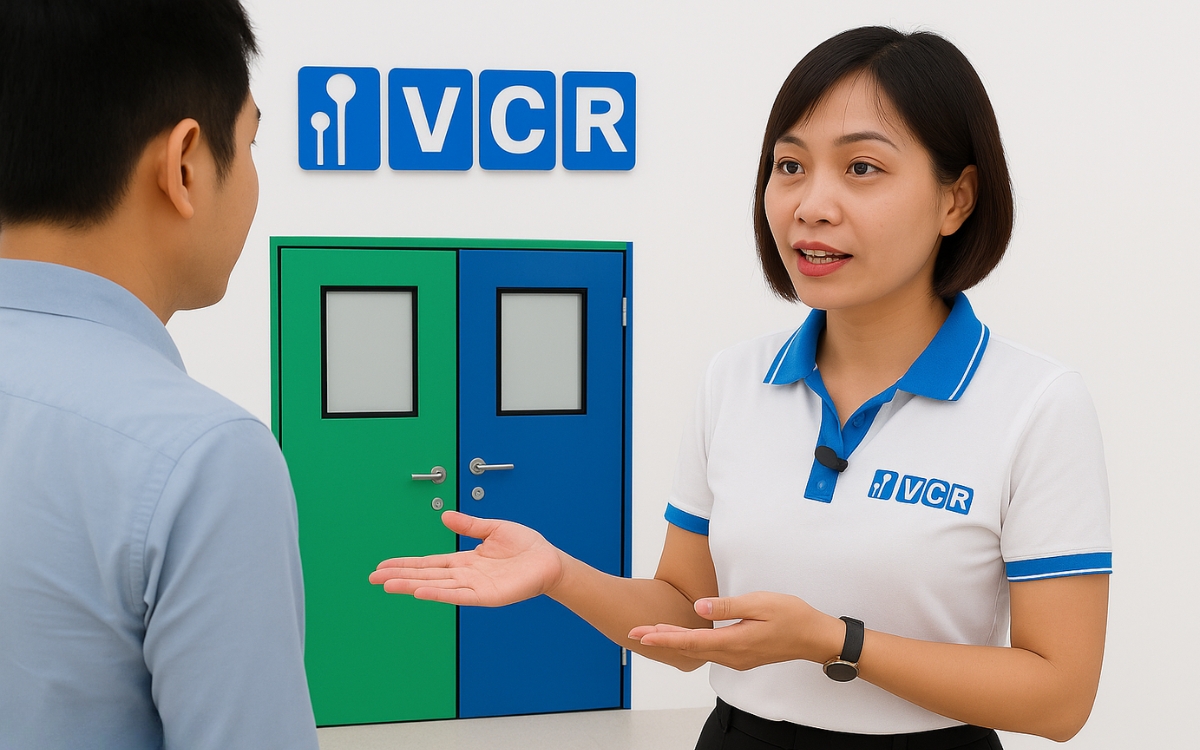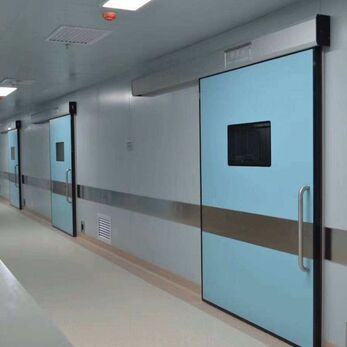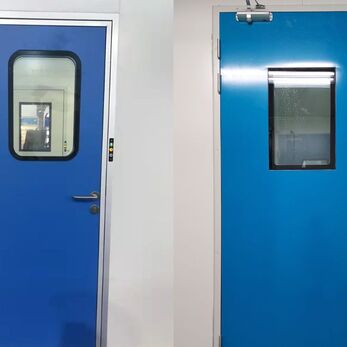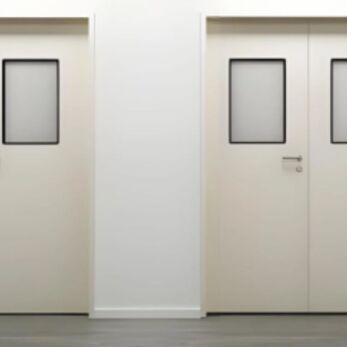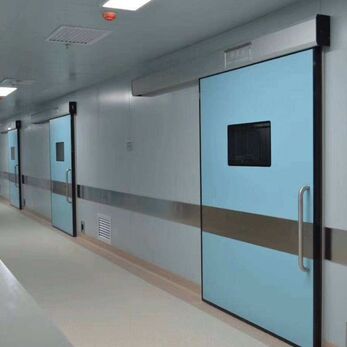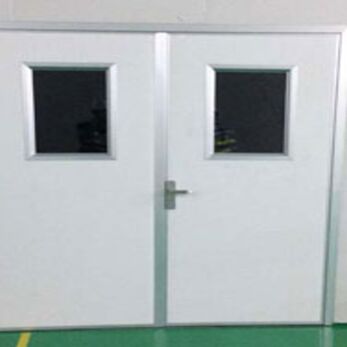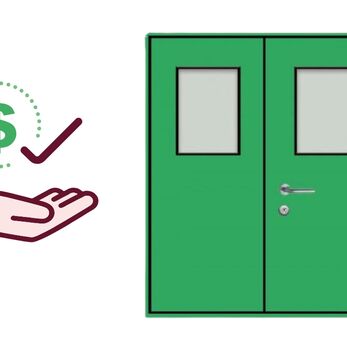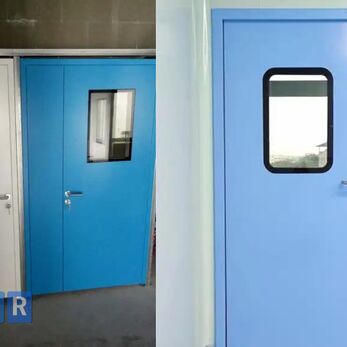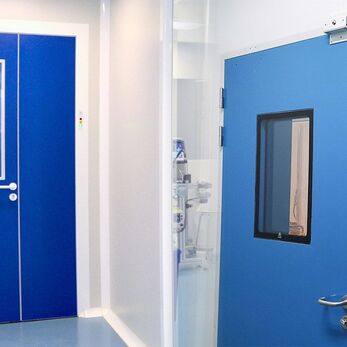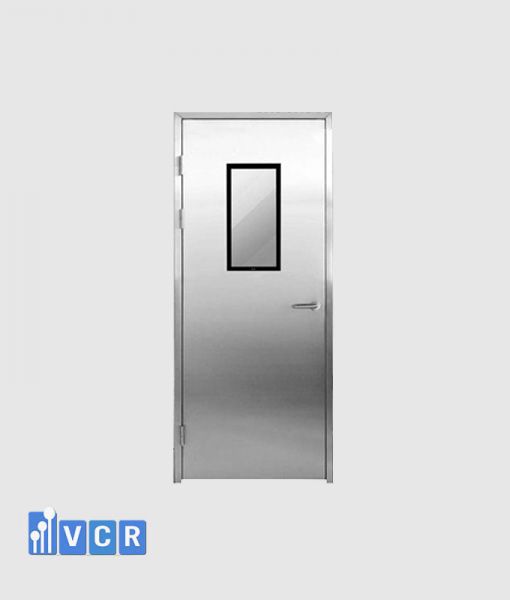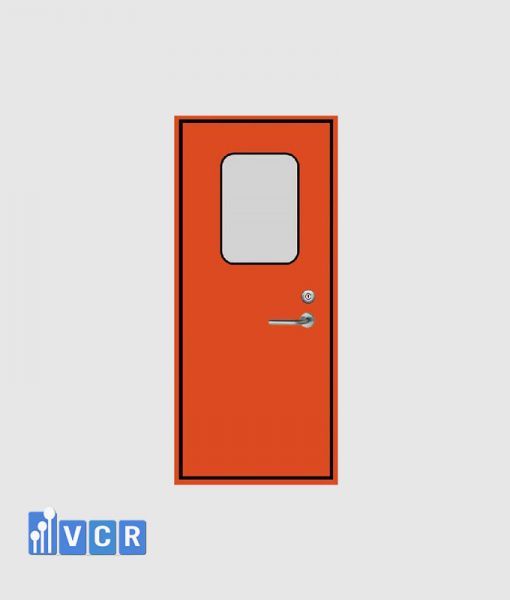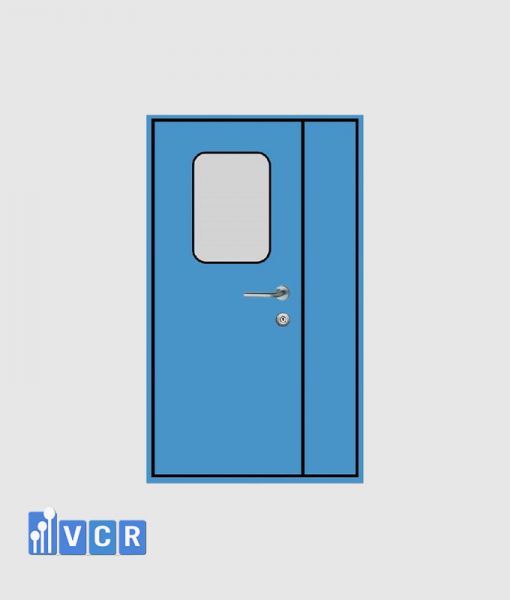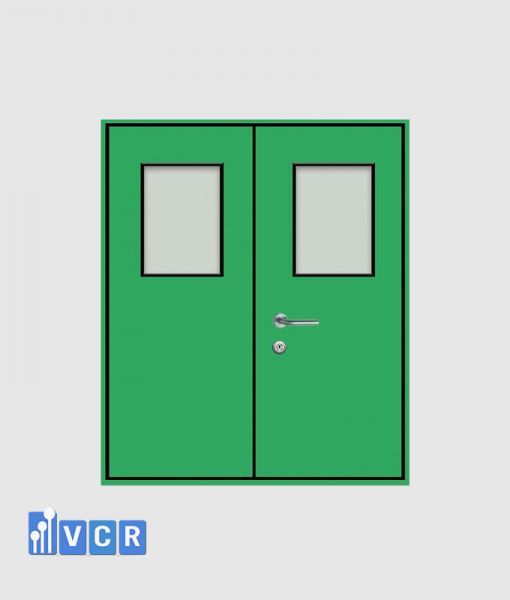Cleanroom doors are an essential solution in cosmetic manufacturing plants where strict hygiene and environmental control are required. With a tight-fitting design, dustproof and chemical resistant, cleanroom doors help prevent cross-contamination, maintain positive pressure and optimize sterilization processes.
- 1. What is a Cleanroom Door and Its Role in Cosmetic Manufacturing Plants?
- 2. Common Types of Cleanroom Doors in the Cosmetics Industry
- 3. Price List of Cleanroom Doors for Cosmetic Manufacturing Plants
- 4. Factors Affecting the Price of Cleanroom Doors
- 5. Recommendations for Choosing Suitable Doors for Each Area in a Cosmetic Manufacturing Plant
- 6. Consultation and Detailed Quotation Support
- 7. Frequently Asked Questions about Cleanroom Doors in Cosmetic Factories
- 8. Contact us now to receive a detailed quote and free consultation!
1. What is a Cleanroom Door and Its Role in Cosmetic Manufacturing Plants?
What is a Cleanroom Door?
A cleanroom door is a specialized type of door designed for environments that require control over air contamination, temperature, humidity, and pressure. These doors are typically made from easy-to-clean materials such as stainless steel, aluminum, tempered glass, or UPVC. They are resistant to dust accumulation, chemical exposure, and are tightly sealed to prevent polluted air from entering clean areas.
The Role of Cleanroom Doors in Cosmetic Manufacturing Plants
In cosmetic production facilities, where strict hygiene and air purity are essential, cleanroom doors play a crucial role:
- Cross-contamination control: Prevent dust, microorganisms, and impurities from entering the production zone.
- Maintaining positive pressure: Ensure clean air inside is not mixed with contaminated outside air.
- Guiding personnel and material flow: Limit uncontrolled interaction between areas of different cleanliness levels.
- Optimizing cleaning and disinfection processes: The materials used allow easy cleaning and do not retain chemicals or bacteria.
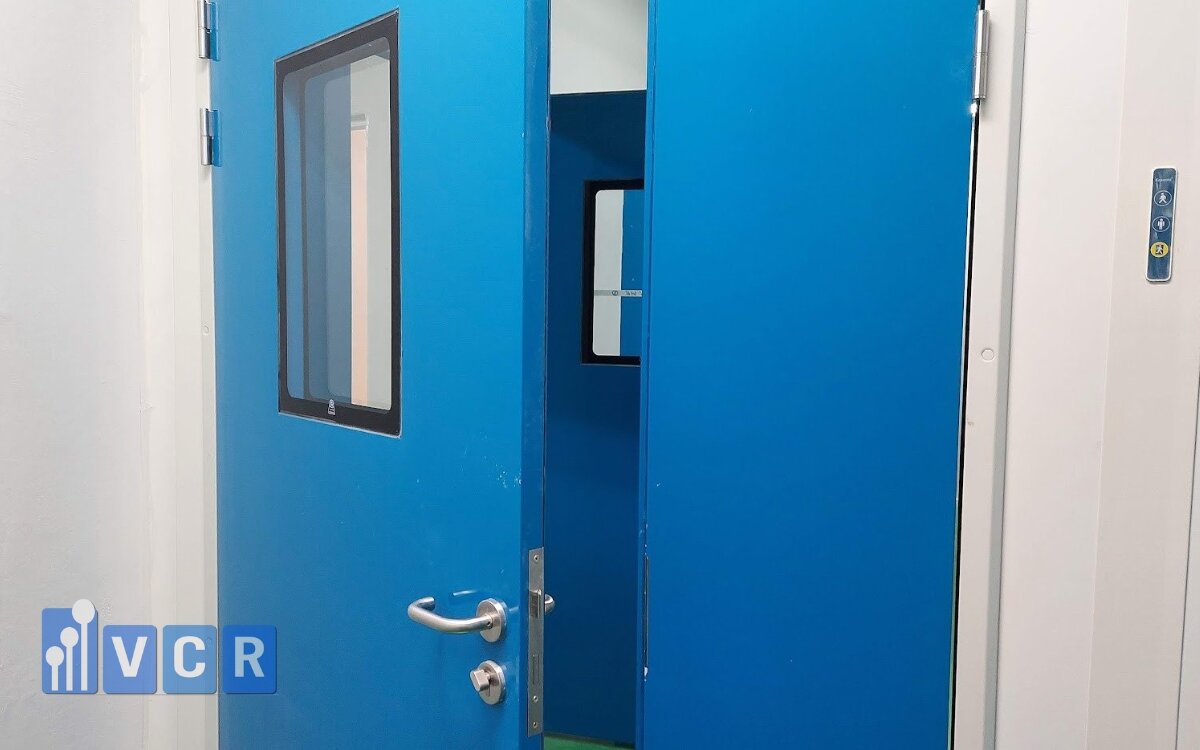
Compliance with GMP and ISO 22716
The proper selection and installation of cleanroom doors are key requirements for meeting international standards:
- GMP (Good Manufacturing Practice): Doors must help control contamination and support safe production processes.
- ISO 22716: A guideline for Good Manufacturing Practices in cosmetics, covering facility architecture and equipment.
Thus, cleanroom doors are not merely physical barriers but essential components in ensuring product quality and regulatory compliance in the cosmetics industry.
2. Common Types of Cleanroom Doors in the Cosmetics Industry
Classification by Materials
Depending on technical requirements and areas of application, cleanroom doors in cosmetic factories are made from different materials, with the most common being:
- Aluminum-glass doors: Combine aluminum frames with tempered glass, allowing clear visibility while maintaining separation.
- Stainless steel panel doors: Made of SS304, rust-resistant and chemically durable, suitable for areas requiring strict hygiene.
- PVC/UPVC doors: Lightweight, corrosion-resistant, easy to clean, commonly installed in supporting areas such as warehouses and changing rooms.
Classification by Functions
Beyond materials, cleanroom doors are also categorized based on technical features to achieve specific control objectives:
- Self-closing doors: Equipped with hydraulic hinges or pneumatic closers to ensure the door remains shut after each entry, minimizing pressure loss.
- Fire-resistant doors: Withstand heat for 60-120 minutes, often used near chemical storage or heat-processing areas.
- Interlock system doors: Only allow one door to open at a time, preventing two doors between cleanrooms from being opened simultaneously. This helps maintain pressure and prevent cross-contamination.
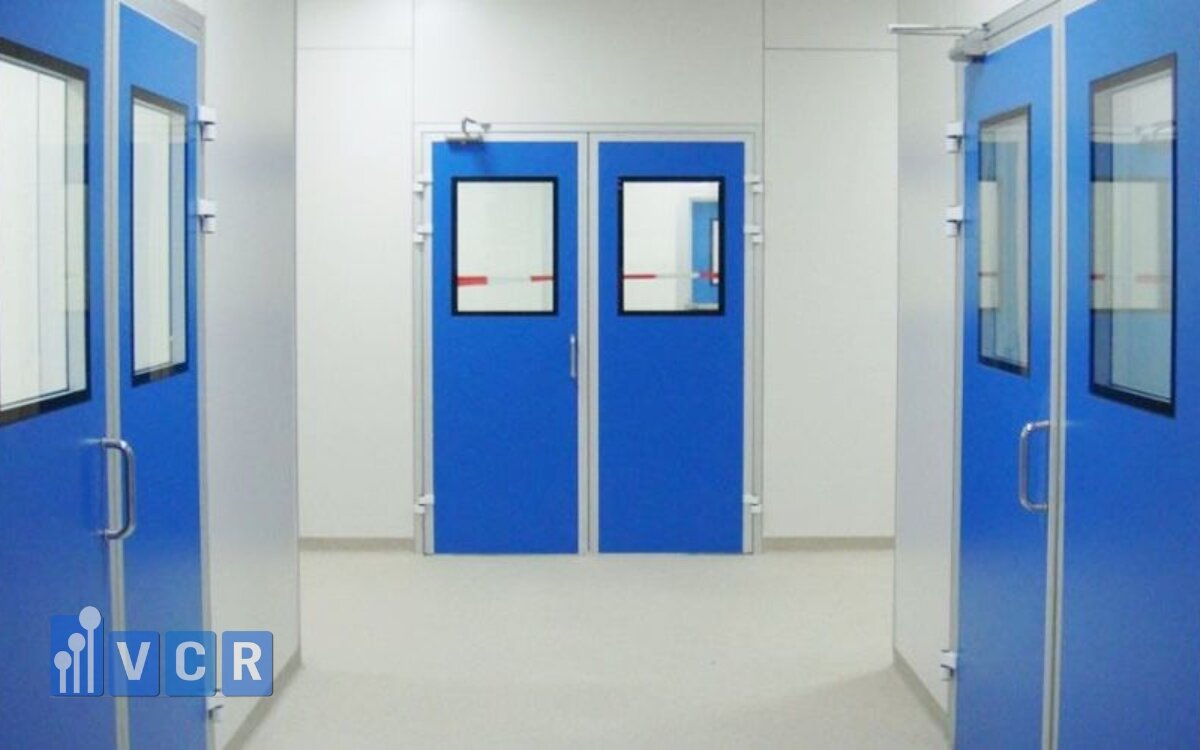
Comparison Table of Cleanroom Doors by Material
|
Door Type |
Material |
Common Applications |
Key Advantages |
|
Aluminum-glass |
Aluminum + tempered glass |
Filling rooms, production areas |
Lightweight, aesthetic, transparent |
|
Stainless steel |
SS304 stainless steel |
Sanitation areas, formulation rooms |
Corrosion-resistant, easy to clean |
|
PVC/UPVC door |
Rigid UPVC plastic |
Changing rooms, raw material storage |
Low cost, quick installation |
3. Price List of Cleanroom Doors for Cosmetic Manufacturing Plants
The price of cleanroom doors depends on various factors such as material, dimensions, technical features, and customization requirements for each project. Below is the most common reference price list in 2025 for doors used in cosmetic factories that comply with GMP - ISO 22716 standards:
Reference Price List 2025
|
Door Type |
Standard Size |
Unit Price (VND) |
Notes |
|
Aluminum-glass single door |
900 x 2100 mm |
5,500,000 - 7,000,000 |
With observation glass, hydraulic hinge |
|
Stainless steel panel double door |
1500 x 2100 mm |
9,000,000 - 11,000,000 |
Chemical-resistant, can be integrated with interlock system |
|
Self-closing UPVC door |
800 x 2000 mm |
3,800,000 - 5,000,000 |
Suitable for changing rooms, easy installation |
|
Fire-resistant steel door (powder-coated) |
900 x 2100 mm |
6,500,000 - 8,500,000 |
Fire resistance 60-90 minutes, depending on fire rating |
|
Interlock door (single) |
900 x 2100 mm |
8,000,000 - 10,500,000 |
Includes interlock module and accessories |
Notes:
- Prices exclude VAT and transportation/installation costs.
- Costs may vary depending on quantity, customized design (color, special accessories, logo, etc.).
- For GMP projects, VCR provides free on-site survey and consultation services.
4. Factors Affecting the Price of Cleanroom Doors
The cost of a cleanroom door is not only determined by its size or material but also by many technical factors and specific requirements from cosmetic factories. Understanding these factors helps investors choose solutions that fit their budget while still meeting GMP - ISO 22716 standards.
1. Material Type
- Stainless steel 304: Higher cost but excellent durability, chemical resistance, easy to clean.
- Aluminum profile: Lightweight, durable, reasonably priced, easy to install.
- UPVC plastic: Low-cost, suitable for auxiliary areas, but not ideal for main production zones.
- Tempered glass: Commonly used for viewing windows, enhancing aesthetics and monitoring.
2. Dimensions and Special Design
- Larger doors or customized designs (logo printing on glass, brand colors, etc.) increase fabrication costs.
- Double doors, sliding doors, or curved-corner doors are typically more expensive than standard single-leaf doors.
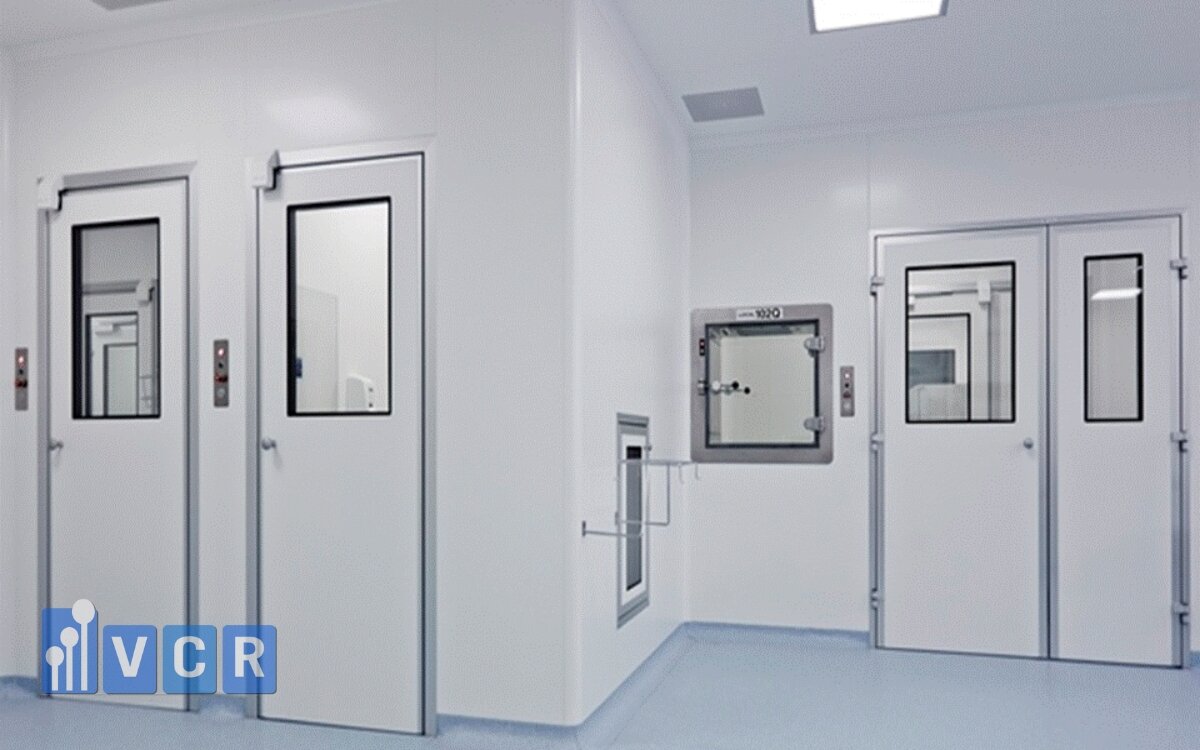
3. Technical Features
- Interlock integration: Adds safety but increases cost.
- Fire resistance: Requires special materials and certifications, usually 20-30% more expensive than standard doors.
- Sensors, pneumatic closers, magnetic locks, door alarms, etc.: Raise product cost but are often necessary for automated cosmetic production lines.
4. Order Quantity & Delivery Schedule
- The higher the quantity, the lower the unit cost due to economies of scale.
- Urgent orders or fast installation may incur extra rush fees.
5. Documentation & Certification Requirements
- Some factories require CO, CQ, technical drawings, installation guidelines, or ISO/GMP compliance certificates, which add to documentation and standardization costs.
5. Recommendations for Choosing Suitable Doors for Each Area in a Cosmetic Manufacturing Plant
In cosmetic production, each functional area has specific requirements regarding hygiene control, pressure balance, and movement flow. Selecting the right cleanroom door for each zone not only ensures product quality but also helps meet GMP - ISO 22716 standards.
1. Filling and Packaging Area
- Recommended door type: Aluminum-glass single or double doors combined with interlock system.
- Reason: This is a high-cleanliness area that requires strict airflow control and prevention of cross-contamination. Aluminum-glass doors allow clear observation of activities inside while maintaining environmental separation. Interlock systems prevent simultaneous opening of two doors, ensuring stable pressure and cleanliness.
2. Changing Room - Airlock
- Recommended door type: Self-closing UPVC doors or lightweight aluminum doors with pneumatic closer.
- Reason: This zone has frequent personnel movement and therefore needs lightweight, easy-to-operate doors. Self-closing mechanisms minimize pressure loss and reduce cross-contamination risks between different cleanliness levels.
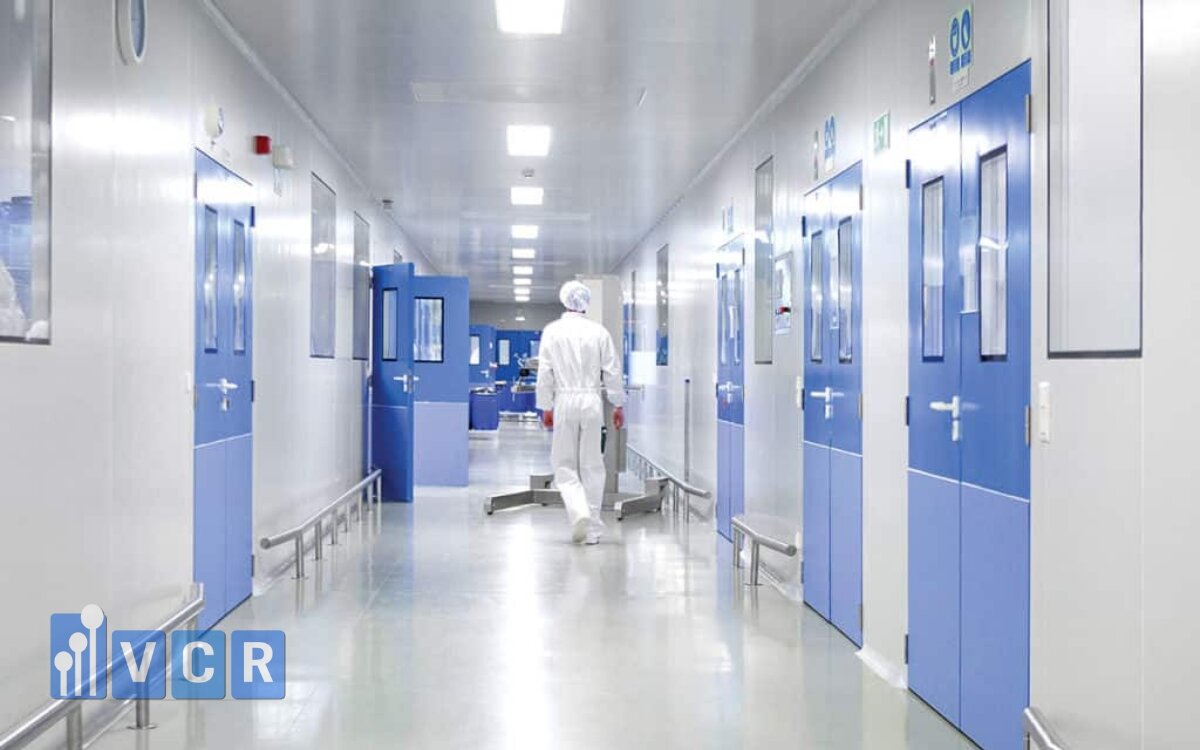
3. Raw Material and Packaging Storage
- Recommended door type: Stainless steel panel doors or heavy-duty industrial plastic doors.
- Reason: Storage areas often deal with heavy loads, humid conditions, or dust exposure. Doors must be impact-resistant, non-corrosive, and easy to maintain. Stainless steel 304 is an ideal choice thanks to its high durability and chemical resistance.
6. Consultation and Detailed Quotation Support
Choosing cleanroom doors for a cosmetic factory is not simply about purchasing equipment; it requires synchronization with the plant’s architecture, production processes, and strict hygiene standards. Understanding this, VCR’s technical team is always ready to support businesses from consultation to actual installation.
Technical Support & Installation Drawings
- Advise on suitable door types for each production area (filling, storage, airlock, etc.)
- Provide detailed technical drawings for easy integration into the overall GMP layout
- Guide door placement according to clean-dirty airflow direction to ensure unidirectional movement
Quotation by Project Requirement
- Provide transparent quotations by product line, material, and accessories
- Flexible pricing based on quantity, delivery time, and integration requirements (interlock, sensors, etc.)
- Offer free on-site surveys directly at the factory
7. Frequently Asked Questions about Cleanroom Doors in Cosmetic Factories
1. Are cleanroom doors mandatory in cosmetic factories?
Yes. Especially for factories applying ISO 22716 or GMP standards, cleanroom doors are essential components of environmental control systems. They help maintain unidirectional airflow, prevent cross-contamination, and ensure hygiene safety throughout production.
2. Can ordinary wooden or steel doors be used instead?
Not recommended. Wooden or standard steel doors are prone to corrosion and deterioration in high-humidity environments. They are difficult to clean, tend to accumulate dust and bacteria, and do not meet the requirement for non-particle-generating materials in clean areas—a mandatory GMP condition.
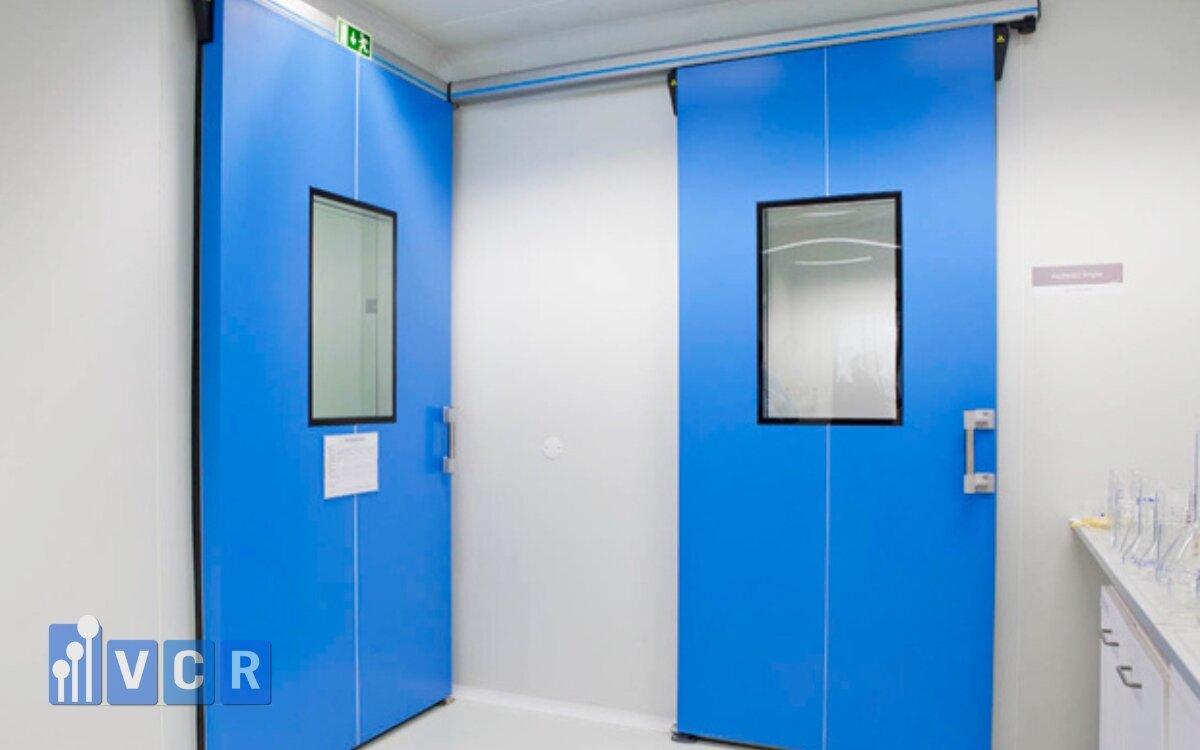
3. Do cleanroom doors require certification or inspection?
- Not mandatory as a separate certification, but you should select doors that:
- Have clear material origins (SS304 stainless steel, tempered glass, industrial UPVC, etc.)
- Are designed and installed according to cleanroom standards
- Can be supplied with CO, CQ, or technical documents for GMP validation if required
8. Contact us now to receive a detailed quote and free consultation!
If you are building or renovating a cosmetic factory and need a clean room door solution that meets GMP - ISO 22716 standards, let VCR accompany you:
Consulting on choosing the right door type for each area
Supporting free on-site survey and drawing design
Detailed quotes for each project, optimizing investment costs
Hotline: 090.123.9008
Email: [email protected]
Website: https://cuaphongsachvcr.com/
Diep VCR




